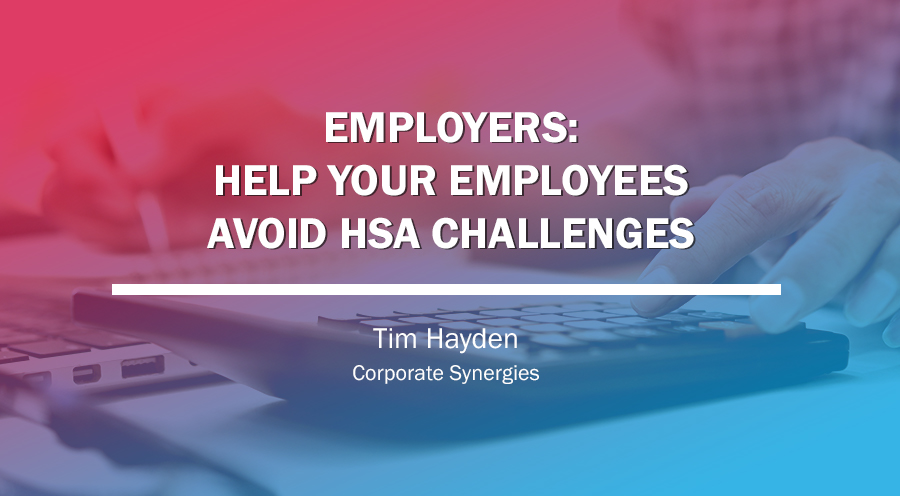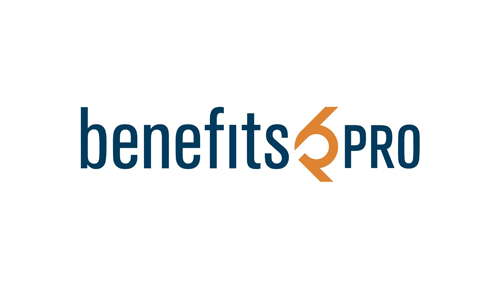Health savings accounts (HSAs) continue to increase in popularity, but not without issues for both employees and employers. From 2008 to 2018, the total amount deposited in HSAs rose from $5.3 billion to $43.5 billion.1 That number is projected to keep growing as more employers offer high-deductible health plans (HDHPs) with HSAs. Despite this, HSAs don’t appear to have accomplished their original intent. HSA challenges can be resolved, but it takes work.
Background
The federal government created HSAs in 2003 to provide individuals covered by high-deductible plans the opportunity to save tax-free money for healthcare expenses. The intention was that HSA enrollees would build up savings and draw on these funds later in life when medical expenses typically balloon. By and large, that is not happening for a variety of reasons.
Problems for Employees
One contributing factor is that employees are financially stressed out. Healthcare expenses and insurance deductibles continue to rise, meaning that a lot of employees simply can’t build up their HSA balances; individuals still spend more than 75% of the funds they contribute to their HSA each year on healthcare expenses. Retained HSA assets have increased modestly—from 18% to 24% between 2017 to 2018—but the average HSA balance was just $2,144 in 2018. And the average HSA balance grew by just $110 from 2017 to 2018.2
One HSA challenge: covering healthcare and Rx costs now.
These costs cut into the employee’s ability to save money in an HSA over the long term. The minimum insurance deductible for an HDHP with HSA in 2004 was $1,000 for an individual and $2,000 for a family. Since then it’s risen to $1,350 and $2,700, respectively.3
A gap in employee education & communications about HSAs impacts participants, who don’t always understand the full power of these accounts. There are a growing number of options for HSA banks that could potentially make it easier for employees to use. But many don’t know that the federal law allows them to use whichever bank they please to house their accounts. Instead, most carriers dictate their preferred HSA vendor and employees follow along.
This can become problematic when a carrier changes its preferred HSA vendor. Unfortunately for employees, not all HSA banks are created equal and some are far easier to work with than others. Switching to a new HSA bank can leave employees facing blackout periods during the transition or problems paying bills using their HSA funds. If HSAs are difficult to use, employees will simply stop using them.
Additionally, most employees don’t understand that they can increase or decrease their own HSA payroll contribution during the plan year. This is different from the FSA rules and not always clear to the employee.
Problems for Employers
When employees aren’t using HSAs to their full advantage, it becomes a problem for employers. Typically, when an employer begins offering high-deductible health plans with an HSA, it will contribute to employees’ accounts to soften the burden of paying for prescription drugs and out-of-pocket medical care until the deductible is met. This gives employees time to build up their HSA savings.
But many employers get stuck contributing to employee HSAs years after they’ve switched to the plan, which negates any savings they may have realized by switching to an HDHP with HSA in the first place. I recommend that the employer draw down their contribution over time as a strategy to contain the cost of the plan.
Because employees have their HSAs propped up by their employer, they often don’t bother to become more informed consumers making better decisions about their care. This poor consumerism means employers aren’t seeing the full impact on their benefit plans.
Employers are also seeing problems with the carrier-HSA bank relationship. Relying on a carrier to dictate an HSA bank means the carrier can move accounts from one bank to the next on a whim—regardless of the effects on your employees. The contractual relationship between the carrier and their HSA bank is not made public, so the reasons for the switch are hard to determine. However, you can bet that they are benefiting in some way and often at the expense of the account holder.
Solutions for Employers and Employees
There are a number of solutions to make HSAs work a little better for everyone. Education is one; your employees need multiple campaigns and pre-enrollment information, to learn about how best to use HSAs.
In order to have more of an opportunity to save in an HSA, I also believe that health & wellness and consumerism need to be a focus of every employer. Put programs into place that move the wellness needle and provide employees with education and resources to make better decisions about their healthcare.
Finally, employers should take control of their HSA banking relationship and carve it out from carriers. This enables you to choose a bank that puts you and your employees first.
1Devenir Research, “2018 Year-End HSA Market Statistics & Trends Executive Summary”
2 Ibid.
3 DQYDJ, “Historical HSA Contribution Limit”






